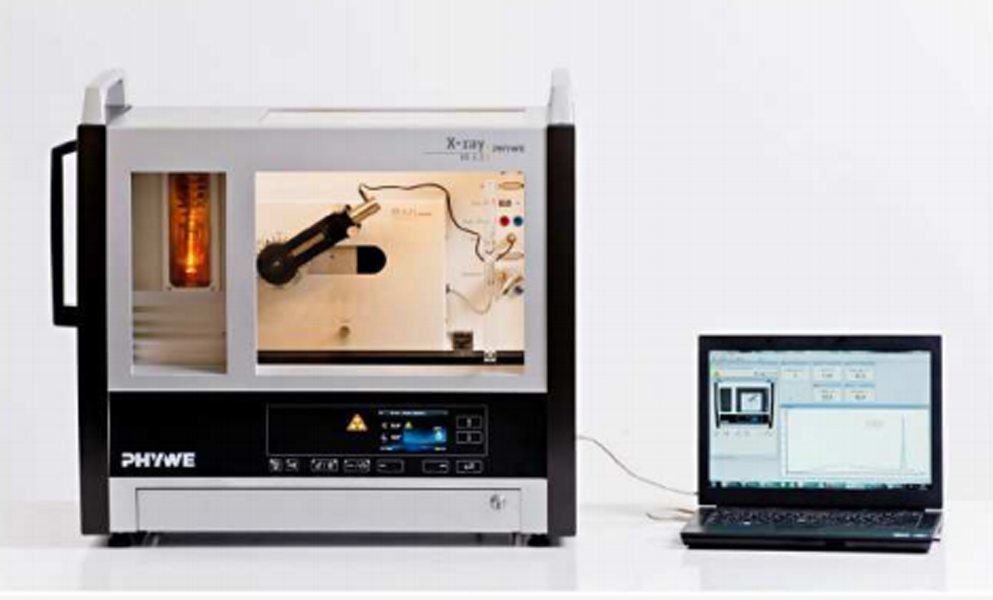Duane-Hunt displacement law and Planck’s “quantum of action

X-ray spectra are recorded as a function of the anode voltage. The short wavelength limit of the bremsspectrum is used to determine the agreement with the Duane-Hunt displacement law, and to determine Planck’s “quantum of action”.
Geiger-Mueller counter tube, type B, BNC cable 50 cm
XR 4.0 X-ray LiF crystal, mounted
XR 4.0 X-ray Diaphragm tube d = 2 mm
XR 4.0 X-ray goniometer
XR 4.0 expert unit, X-ray unit, 35 kV
XR 4.0 Software measure X-ray
Data cable USB, plug type A/B, 1.8 m
XR 4.0 X-ray Plug-in Cu tube
- Record the intensity of the X-rays emitted by the copper anode at various anode voltages as a function of the Bragg angle using an LiF monocrystal.
- Determine the short wavelength limit (= maximum energy) of the bremsspectrum for the spectra obtained in (1).
- Use the results to verify the Duane-Hunt displacement law, and to determine Planck’s “quantum of action”.
- X-ray tube
- Bremsstrahlung
- Characteristic X-ray radiation
- Energy levels
- Crystal structures
- Lattice constant
- Interference
- Bragg equation
